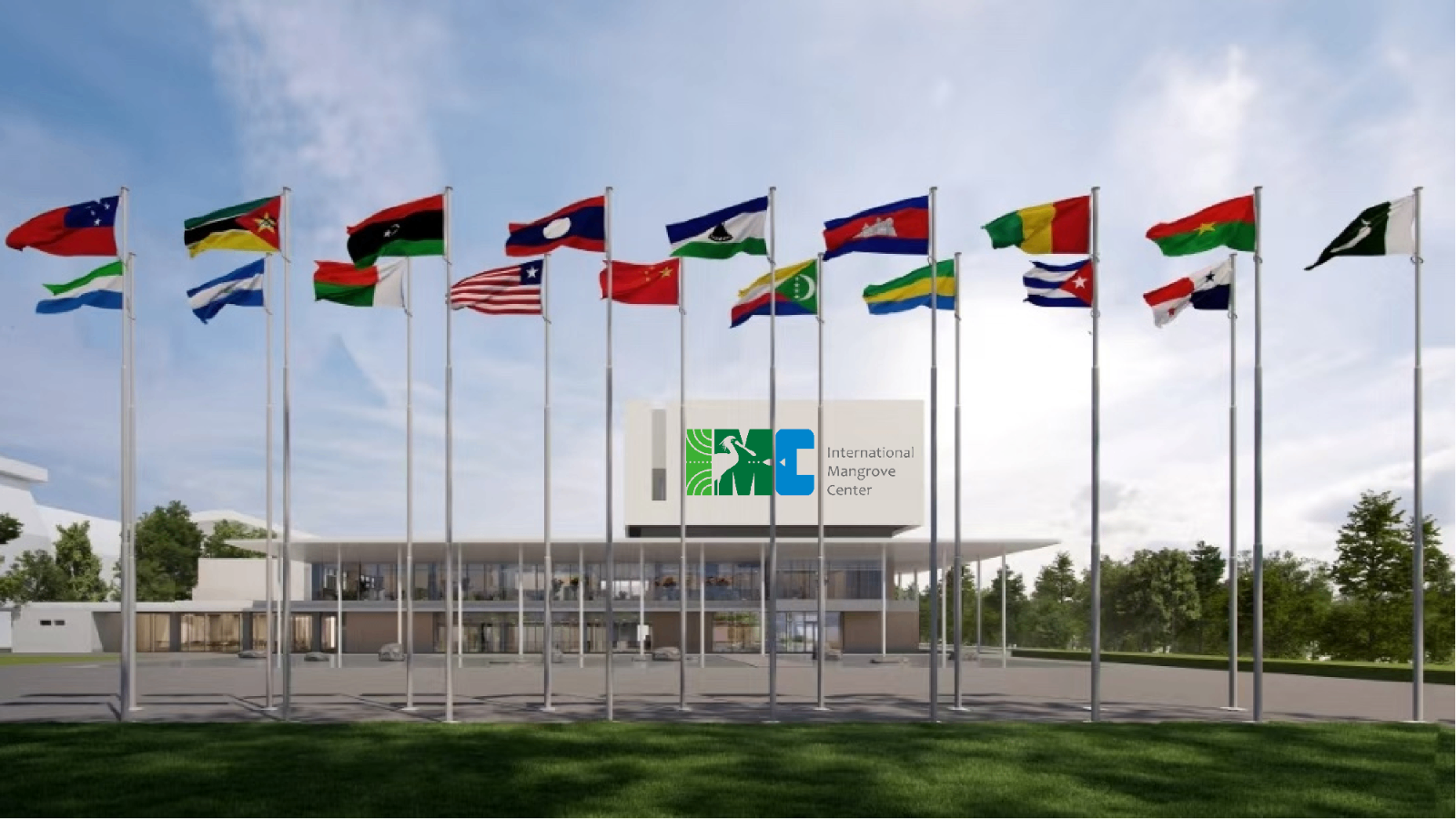On Thursday, August 28, 2025, a high-level delegation led by Prof. Bao Daming, Director General of the Interim Secretariat of the International Mangrove Center (IMC), and Mr. Xu Songming, Head of the Shenzhen Municipal Planning and Natural Resources Bureau, conducted an on-site inspection of the IMC Secretariat building and the Mangrove Wetland Museum construction site in Shenzhen. This visit represents a significant step forward in the development of the International Mangrove Center, designed as a global platform for the conservation, research, and communication of mangrove ecosystems.
Currently, the IMC Secretariat Building is progressing steadily, with significant advancements in both renovation and new construction phases. The project is on track to meet its key goal of topping out the main structure by December 2025, with full completion slated for June 2026. The building will span a total area of 3,755 square meters and is a key component of the IMC initiative. It will serve as the operational hub for the Center, facilitating global collaboration on mangrove conservation and restoration.
IMC Permanent Secretariat
In addition to the Secretariat, the Mangrove Wetland Museum is another cornerstone of the IMC’s mission, with a construction period spanning from September 2025 to September 2028. The Mangrove Wetland Museum will feature exhibits on mangrove species from across the world, state-of-the-art research laboratories, and will host international conferences aimed at fostering global awareness and cooperation in mangrove conservation. With a projected annual visitation of around 2 million people, the museum is set to become a major global hub for education and research on mangroves.
Alongside the construction updates, the delegation participated in an ecological restoration activity at the Guangdong Neilingding Futian National Nature Reserve’s fish ponds. As part of the "Fish Fry Release – Ecological Replenishment for Migratory Birds" program, 10,000 black seabream and 500,000 new shrimp were introduced into the ponds. This initiative aims to provide a rich food source for migratory birds, such as the Black-faced Spoonbill, which typically arrive in November. By enhancing the local ecosystem in this way, the activity plays a crucial role in supporting migratory bird populations and promoting biodiversity within the region.
The delegation also discussed the work of the Shenzhen Special Working Group for the International Mangrove Center. The group provided a detailed report on the current status of the IMC’s projects and outlined future plans. Central to the discussion was the ongoing need for international cooperation in mangrove conservation. The IMC will serve as a critical platform for fostering global partnerships, facilitating the exchange of research and best practices, and promoting sustainable development initiatives in mangrove ecosystems worldwide.
This initiative aligns with Shenzhen's ambitious vision to become an international wetland city by 2035, serving as a model for harmonious coexistence between modern urban development and natural ecosystem preservation. The International Mangrove Center stands as a testament to China's commitment to global environmental stewardship and international cooperation in conservation efforts.